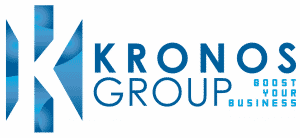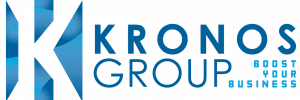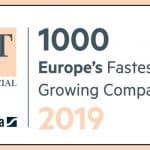How your organisation can carry out strategic procurement and inventory management to maximise ROI

Summary
Practising strategic procurement and inventory management can reliably provide a pathway for organisations to considerably reduce costs and boost ROI.
By identifying how to practise strategic procurement within your organisation, you can adopt an approach that maximises the value it receives from its suppliers, reduces its exposure to risks, and improves the quality of the products and services purchased.
ROI can be further improved when organisations understand how to practise strategic inventory management so that they can improve their inventory management processes, reduce their inventory holding costs, and ensure that they have the right products on hand to meet customer demand.
When combined, these two approaches can considerably improve profitability by cutting down a significant proportion of the operating costs of your organisation.
Procurement and inventory management are two critical functions that can greatly impact an organisation’s return on investment (ROI).
Procurement refers to a broad function that is chiefly responsible for efficiently conducting the process of acquiring goods and services from vendors. This process is also commonly known as sourcing and purchasing—this is the main cost centre for purchasing costs.
Inventory management involves tracking, storing, and controlling the flow of products in a company’s supply chain and is the function responsible for holding an adequate level of stock to ensure that the operations of the organisation are seamless.
Inventory management can determine the level of stock-holding costs that are incurred by the company, which could be excessively high in organisations that unnecessarily hold a large buffer stock. On the contrary, the unavailability of stock can cost businesses significantly in terms of idle time, loss of orders, and even a halt in operations until inventory can be sourced.
When both procurement and inventory management are executed effectively, organisations can minimise costs, improve operational efficiency, and better the bottom line.
How to practise strategic procurement
Strategic procurement involves sourcing the right products, from the right suppliers, at the right price, and at the right time. Here are some ways to implement strategic procurement in your organisation:
Develop a procurement strategy: Define your organisation’s procurement goals and objectives; these could include: cost reduction, quality improvement, risk management, and supplier diversity.
Conduct market analysis: Assess the current market conditions, supplier capabilities, and price trends to determine the best procurement strategy that is suitable for your organisation and fits in with its supply chain.
Build strong supplier relationships: Strengthen existing partnerships with suppliers and build new relationships with new vendors to secure more favourable terms (such as long-term contracts), reduce prices, lower lead times, and improve product quality.
Leverage technology: Use the latest procurement software to automate the procurement process, increase transparency, and reduce manual tasks; this will increase efficiency in procurement and reduce human error.
Increase intra-organisational collaboration: Collaborate more closely with internal departments, such as finance, operations, and legal, to ensure that procurement activities align with the overall business strategy.
This approach requires a proactive, systematic, and data-driven approach to procurement, where companies evaluate and prioritise their purchasing needs based on their strategic objectives.
How to practise strategic inventory management
Inventory management involves the coordination of the supply chain to ensure that an organisation has the right products, in the right quantity, at the right time, and at the right cost. Here are some ways to improve your organisation’s inventory management:
Assess inventory levels: Determine the optimal inventory levels required to meet demand and operational requirements while minimising excess inventory.
Implement just-in-time (JIT) inventory systems: This approach will allow your organisation to receive products as and when they are needed, reducing the overall amount of inventory you need to hold. For JIT to be viable, suppliers need to reliably deliver within favourable lead times consistently.
Utilise technology: Use inventory management software solutions to automate the inventory process, improve the accuracy and efficiency of stockholding, and reduce manual tasks to eliminate human error.
Monitor and review inventory performance: Regularly monitor inventory levels and performance to identify areas for improvement and actively make the necessary adjustments to increase efficiency.
Collaborate with suppliers: Work closely with suppliers to ensure that inventory is delivered on time and in the right quantities while maintaining an adequate level of quality.
Effective inventory management can help organisations reduce costs, improve customer service levels, and maximise their ROI.
Discover how to best engage in strategic procurement and inventory management to maximise ROI in your organisation
Expert-led insights from a consultation with a procurement specialist can ensure that you receive reliable and accurate insights and directions on how to best integrate strategic procurement and inventory management within your organisation, to deliver maximum ROI.
Powerful insights can also be gained through a strategic procurement maturity assessment which can help your organisation not only maximise ROI but also help you leverage a wide array of benefits, leading to procurement transformation.




